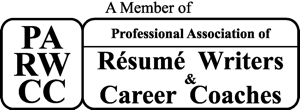iStockphoto.com | CurvaBezier
There is an old saying – “If you don’t know where you want to go, any bus can take you there.” Sounds romantic, doesn’t it? In conjures up a whimsical journey. But as far as your career is concerned, a little more planning is recommended.
Everyone should have a career plan. You don’t have to have it all figured out, but you should have a general sense of direction and career self-awareness. The advantages to having a career plan are:
A documented but flexible career plan, periodically calibrated and revised as necessary, will give you a better understanding of what your next steps will be and how/when to make them.
A career plan will help you develop transferable skills that should increase your future options.
If your decisions are guided by a career plan, you can develop strategies to better help you realize your objectives.
Here are five steps you can follow to help create and document an effective career plan:
Step 1 – Find a Mentor
One of the greatest things you can do for your career has an element of luck to it – find a mentor. A mentor is typically a senior-level co-worker or someone highly experienced in your field; a mentor’s perspective can be instrumental in helping you think about your long-term career plan. It’s important to have a sounding board other than your manager, or managers, who may not be as invested in your development or future. You can benefit from a mentor’s advice and help.
I mentioned the luck aspect, but there are options for those who would prefer to be proactive about a finding a mentor rather than leave it to chance. Independent mentor groups/services exist to help you do just that. Think of them as Big Brothers/Little Brothers for professionals. A quick Google search for “business mentors” brings up Score, MicroMentor, Business Mentors, and Small Business Development Centers as a few potential resources.
Step 2 – Build an Individual Development Plan (IDP)
An IDP is a tool you can use to identify development opportunities within your company, to help you develop transferable skills and hold yourself accountable.
While related to performance appraisals, an IDP is usually outside the scope of your job responsibilities and any specific deliverables or assignments. An IDP lays out your goals and tracks personal development, not the professional requirements of your job. However, like performance reviews, quarterly check-ins with your manager about your IDP progress are not only beneficial, but a necessity if you are going to monitor, review, and adjust your plan.
If this is not a formal part of how your place of employment operates, develop an IDP on your own.
Step 3 – Join Professional Organizations
Belonging to industry groups has obvious benefits and chances, are there is one that fits your needs. In professional organizations, you can expand your network, learn about new opportunities, be up to date on industry news, and maybe even meet your mentor. Some organizations, such as the Project Management Institute, are also training and certifying bodies that offer programs and certifications that will help further your career.
Step 4 – Always Be Training
If your company is serious about developing its employees, congratulations! Take advantage of the continuing education they offer (or mandate). Any formal training, certification, or program is an asset, and some of what you learn will be transferable skills you will use no matter where you go or what you do.
If your company does not offer such opportunities, or you are searching for work, you should seek training out. Get certified. Research what the marketplace wants and invest in your skills to match it. If every job you’re looking at requires Salesforce, and you’ve never touched it before, learn how to use it!
Step 5 –Document Your Plan
There are no rules and regulations to document your plan. The only instruction is to do it. Here are some tips to get you going:
Start with a plan that focuses on your current position (or your last one if you are a job seeker).
Add to that until it’s a 2-Year Plan, then a 5-Year plan.
The strokes will get broader the further into the future you go, but they will be there, distant markers beyond the horizon line to direct you.
Monitor your progress, and make adjustments.
Philip Roufail contributed to this article.
Scott Singer is the President and Founder of Insider Career Strategies Resume Writing & Career Coaching, a firm dedicated to guiding job seekers and companies through the job search and hiring process. Insider Career Strategies provides resume writing, LinkedIn profile development, career coaching services, and outplacement services, including a free resume review. You can email Scott Singer at scott.singer@insidercs.com, or via the website, www.insidercareerstrategies.com.





